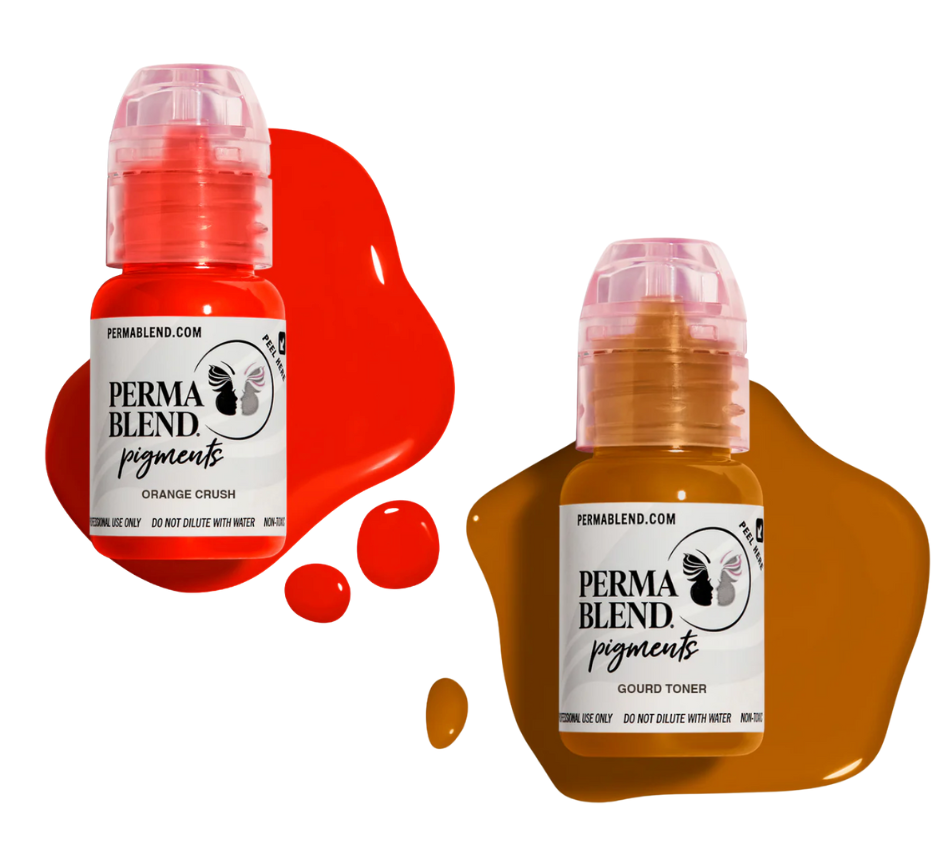Why Do Brows Turn Grey? Understanding PMU Fading and How to Prevent It
If you’ve seen healed brows that look grey, blue, or ashy, you’re not alone. One of the most common concerns in permanent makeup is colour shifting—especially brows turning grey over time.
At Luna Brow Artistry, we prioritize long-term results that heal beautifully and age gracefully. In this blog, we’ll explain why brows turn grey, what causes it, and how both artists and clients can help prevent it.
Why Do Brows Turn Grey or Blue Over Time?
There are several reasons why pigment color shifts or fades to a cool tone after healing. Most of them are related to pigment composition, depth of implantation, and lack of colour modification during the procedure.
1. Pigment Selection and Composition
Many of today’s pigments are hybrids—a mix of inorganic (mineral-based) and organic (carbon-based) components. Over time, the warm tones in the pigment (usually red, orange, or yellow-based) fade faster, while carbon black and titanium dioxide particles remain longer in the skin.
This imbalance often leaves behind a greyish or ashy hue, even with high-quality pigments.
2. Not Using a Modifier
Even with good pigment selection, failing to use a warm modifier—especially on cooler or neutral skin tones—can result in the brows healing too cool or turning grey as they fade.
Warm modifiers help balance the natural fading process, ensuring brows heal to a soft, natural brown rather than a cool or blue-grey undertone
Perma Blend - Orange Crush and Gourd are great modifiers that does not contain titanium dioxide.
3. Implanting Pigment Too Deep
When pigment is implanted too deep into the dermis, the colour may take on a blue or grey hue due to how light reflects under the skin—a phenomenon called the Tyndall effect.
Deeper implantation can also lead to pigment migration, blurring, and uneven healing.
When the pigment is deposited below the dermis layer, the colour will appear more greyish to our eyes.
4. Natural Fading Process
Even when brows are done with the correct pigment and technique, fading over time is completely natural. As pigments gradually break down in the skin, the warm undertones (like yellow, orange, or red) tend to fade faster than the cooler components, such as carbon black or titanium dioxide. This can leave behind a greyish or ashy hue, especially if the pigment wasn’t balanced with a warm modifier.
But there’s more to it than just pigment breakdown—your skin’s melanin content also plays a role in how healed brows appear.
Melanin—the natural pigment in our skin—affects how light interacts with the implanted colour.
In melanin-rich (darker) skin, the higher concentration of melanin can filter and absorb light, which may cause the pigment to appear cooler, duller, or more ashy than intended—even if the right colour was used. This is not because the pigment is implanted deeper, but because of how melanin optically affects the way the colour is seen once healed.
That’s why artists need to adjust their pigment formulations—often by adding warm modifiers—to ensure the healed colour stays true and flattering over time.
Without this adjustment, even high-quality pigment can fade to an undesired grey or blue tone.
When implanting pigment into the skin, it is important to consider the ‘filter’ created by skin colour. In lighter skin types, melanin is present in smaller amounts, resulting in minimal impact on the pigment’s appearance. In contrast, darker skin types contain higher melanin levels, which more noticeably darken the pigment’s final look.
How to Prevent Brows from Turning Grey
For PMU Artists:
Use high-quality hybrid pigments with stable undertones.
Always assess the client’s skin undertone and Fitzpatrick type.
Add a warm modifier when working on cooler skin tones or when using black-based pigments.
Avoid going too deep—depth control is crucial for colour stability.
Understand how pigments break down over time and plan accordingly.
For Clients:
Choose a trained artist who understands pigment science and colour theory.
Ask your artist what pigments and modifiers they use.
Avoid sun exposure, chemical exfoliants, and skincare acids around the brows.
Book timely touch-ups to refresh warmth before grey undertones become visible.
How We Do It at Luna Brow Artistry
At Luna Brow Artistry, we don’t just create brows for today—we design brows that heal well, age well, and last beautifully. We use premium hybrid pigments, apply the right modifiers, and control depth precisely to prevent unwanted color shifts.
“Grey brows are preventable—with the right knowledge, tools, and technique.”
Final Thoughts
Brows turning grey isn’t always a sign of bad work—it’s often the result of how pigments break down in the skin. But with proper technique, pigment choice, and maintenance, your brows can stay warm, soft, and flattering for years.
Whether you’re booking your first Nano Brow session or looking to correct faded grey brows, we’re here to help you achieve results you’ll love long-term.








